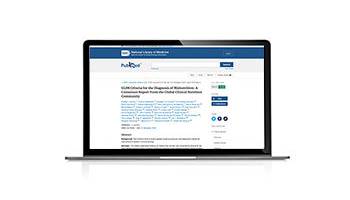GLIM Consensus Paper on Diagnosing Malnutrition
GLIM Consensus Paper on Diagnosing Malnutrition
- Main Image
-

- Tagname
- Article
- title
- GLIM Consensus Paper on Diagnosing Malnutrition
- Abstract
-
The Global Leadership Initiative on Malnutrition (GLIM) is focused on building a global consensus around core diagnostic criteria for malnutrition in adults in clinical settings. In 2018, the GLIM leadership committee and working group published consensus recommendations for a two-step approach to malnutrition diagnosis. Read the complete GLIM consensus statement here.
- Content Reference
- /content/an/hcpproconnect/uk/en/home/adult/resources/public/GLIM-Consensus-Paper-on-Diagnosing-Malnutrition







